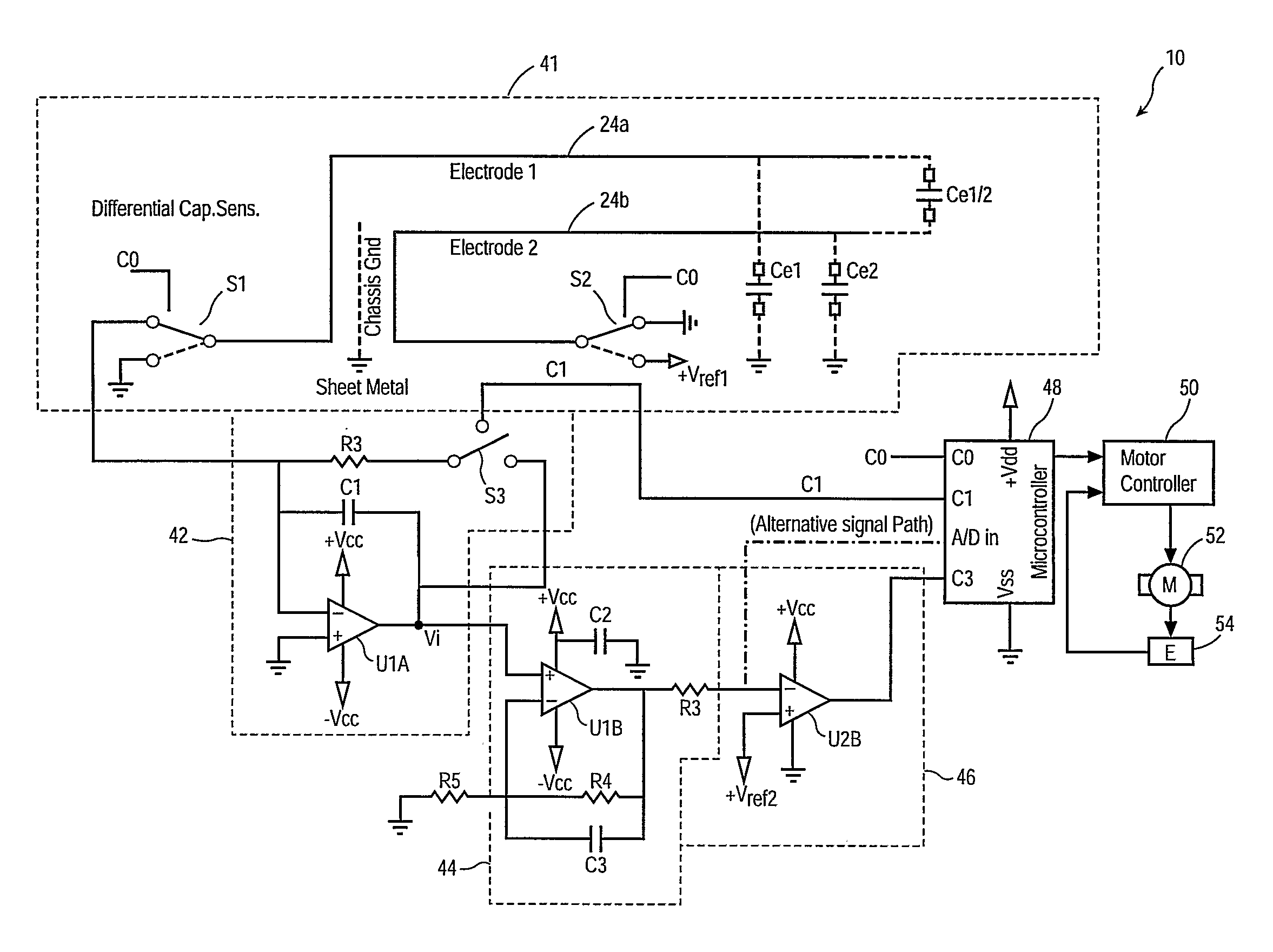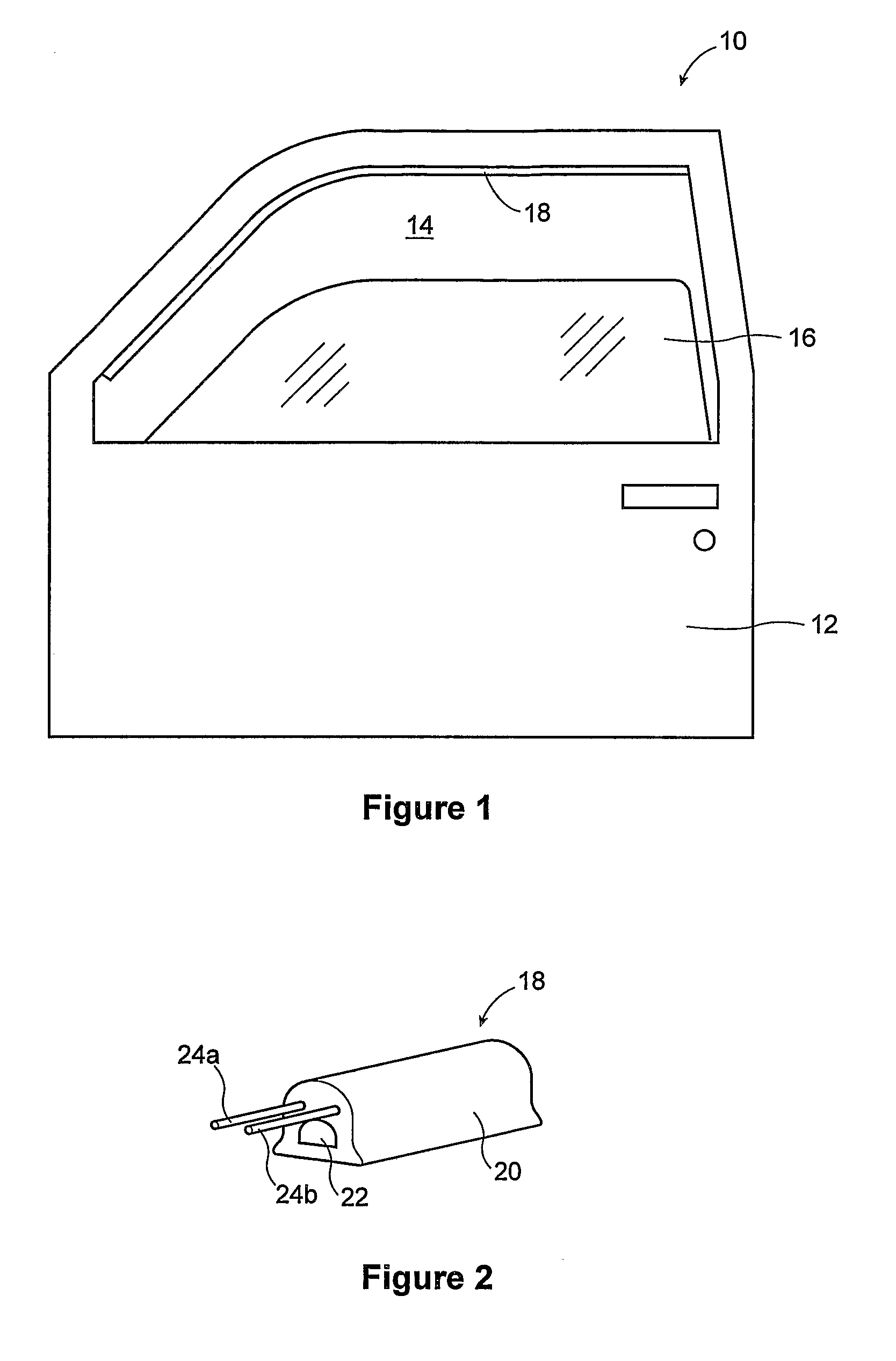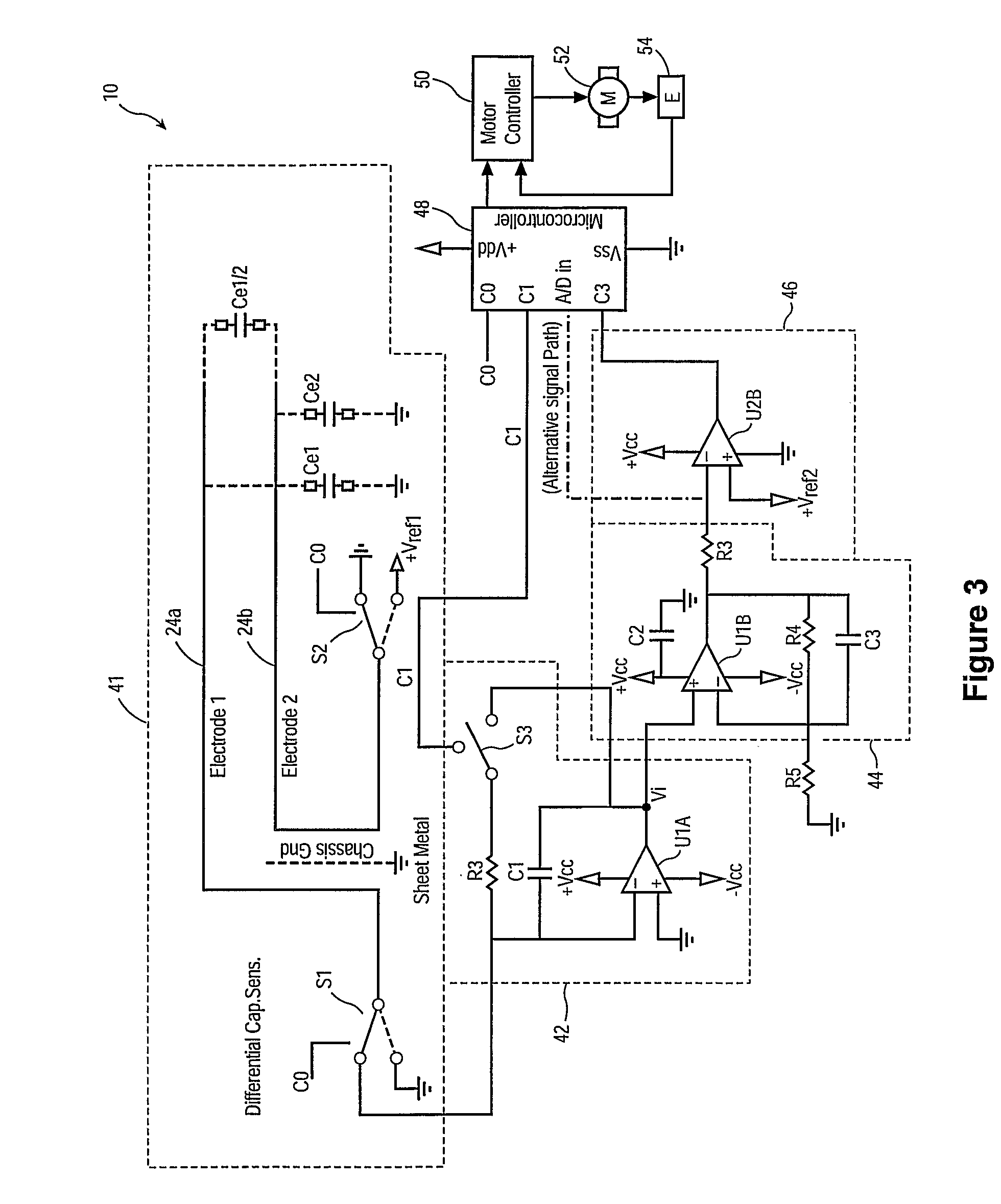Differential anti-pinch capacitive sensor
a capacitive sensor and anti-pinch technology, applied in the field of proximity sensors, can solve the problem of becoming relatively more difficult to sense small objects near the electrod
- Summary
- Abstract
- Description
- Claims
- Application Information
AI Technical Summary
Benefits of technology
Problems solved by technology
Method used
Image
Examples
Embodiment Construction
[0017]FIG. 1 illustrates a typical automotive door 12 that is comprised of sheet metal and includes an aperture 14, structured as a window frame 40, which may be closed by a window pane or glass panel 16. The glass panel 16 is raised or lowered by a window regulator (not shown) which includes an electric motor 52 (see FIG. 3) as the motive driving source, as well known in the art, per se. The motor 52 is controlled in part by a non-contact obstruction sensor or anti-pinch assembly 10, the particulars of which are described in greater detail below. The anti-pinch assembly 10 prevents the glass panel 16 from pinching or crushing a foreign object such as a finger (not shown) that may be extending through the aperture 14 when the panel nears its closed position. It will be appreciated by those skilled in the art that the anti-pinch assembly 10 can be applied to any motorized or automated closure panel structure that moves between an open position and a closed position. For example, a no...
PUM
| Property | Measurement | Unit |
|---|---|---|
| capacitance CE1/2 | aaaaa | aaaaa |
| capacitance CE1 | aaaaa | aaaaa |
| voltage | aaaaa | aaaaa |
Abstract
Description
Claims
Application Information
 Login to View More
Login to View More - R&D
- Intellectual Property
- Life Sciences
- Materials
- Tech Scout
- Unparalleled Data Quality
- Higher Quality Content
- 60% Fewer Hallucinations
Browse by: Latest US Patents, China's latest patents, Technical Efficacy Thesaurus, Application Domain, Technology Topic, Popular Technical Reports.
© 2025 PatSnap. All rights reserved.Legal|Privacy policy|Modern Slavery Act Transparency Statement|Sitemap|About US| Contact US: help@patsnap.com



